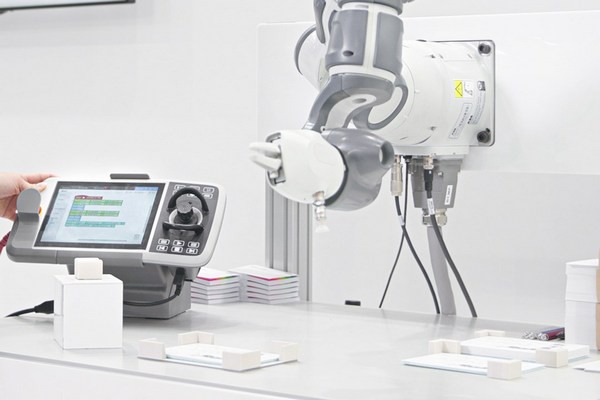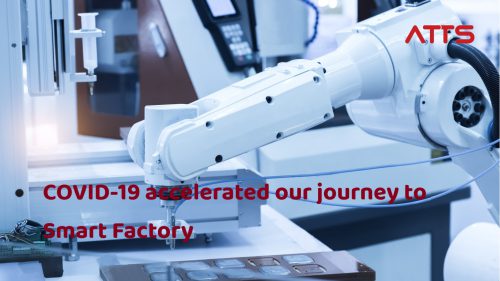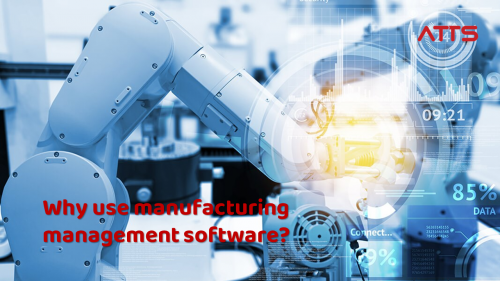4 Benefits of Industrial Automation in Electronics Manufacturing
Industrial automation is a mammoth topic covering areas ranging from simple handling systems, through to digital manufacturing, or the “Smart Factory” and Industry 4.0.
Industrial automation is used across a wide spectrum of manufacturing sectors, from the automotive and aerospace industries; to the FMCG and oil and gas industries – to name but a few. Furthermore, Industrial automation offers plenty of benefits to electronics manufacturers, specifically the following four.

Why is automation necessary for electronics manufacturing?
Robots allow for miniaturization, increased throughput and reduced lead times for electronics manufacturers. Industrial robots are inherently more precise than humans, and have a major impact on assembly work that revolutionizes the rest of the electronics supply chain.
Accuracy is an important element in the electronics industry because the parts are much smaller. Precision of locating, placing and assembling parts is critical. Robots pick up and place components into electronic assemblies where the position is not always precisely known or parts cannot be reliably placed without finessing. Sensing tools allow the robot to ‘feel’ its way into an assembly, placing parts in the assembly processes.
More opportunities for customisation
More and more customers are requesting personalised and customised products to meet the needs of their particular markets. Therefore, manufacturers need to be able to meet these demands without losing money – while still adhering to strict quality and safety standards.
Smart factories will enable manufactures to increase flexibility in production. By increasing automation through the use of sensors and configurable robots on the assembly line, they will be able to mass produce items built to individual customer orders and specifications. In the automotive industry, buyers have long been able to “build” their new car on-line and choose from a variety of options to suit their style and taste. However, this has not been the case in other sectors, such as consumer electronics, whereby traditionally products have been produced in high volumes to the same specification. Smart factories have the ability to change this.

Robot can be configured to meet client’s personalized needs
It is also thought this new level of flexibility will encourage further innovation as original equipment manufacturers (OEMs) will be able to build prototypes and new products quickly without the need to invest in expensive tooling.
Increased productivity and efficiency
Human labour comes with an inherent margin of error and, while machines are not fail-proof, they are less prone to make mistakes. For instance, computers don’t get tired or distracted by personal problems. Of course, a machine can’t match human creativity and skill but when it comes to repetitive work, it can get more done, in less time – and more precisely.
Therefore, automation is typically employed in situations where a high degree of accuracy is needed; where the work is physically demanding or taking place within dangerous environments; where monotony occurs.
Improved quality
It follows that if the basics of the electronics manufacturing process can be carried out more quickly, then more time can be devoted to the complexities. Speaking to The Manufacturer, Asif Moghal, manufacturing industry manager, Autodesk, says: “Robotics takes basic tasks away, enabling us to focus on higher value activities. The workshops of the future will be highly automated; the human difference is innovation and skills.”
With the basic tasks covered, automation frees up more time to focus on other details; the finishing touches, so to speak. This results in inherently higher quality products.
New products
Against the backdrop of automation, manufacturers with their finger on the pulse stand to create new revenue streams through the development and manufacture of an expansive range of new products and systems.
These advancements not only create revenue and recognition for the OEMs behind them, but they also play a part in driving automation even further forward – and so advancement builds upon advancement.

Automation drives innovation and creativity for newer products
Read more: 5 manufacturing trends that to look forward to in 2022
Primarily, the key considerations of industrial automation were improving productivity and cutting costs during the manufacturing process, but now the focus is moving towards improving quality and nimbleness, with more agile supply chains and flexible configuration of products.
Industrial automation enables manufacturers in a host of ways. Ultimately, it paves the way for higher quality products that push the boundaries – the possibilities are seemingly endless.
Find more about ATTS services:
https://atts.com.vn/services.html
Connect with us:




